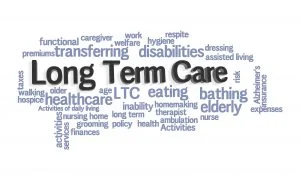Technology has permeated every aspect of modern life making people more connected, efficient, and mobile than ever. It has also transformed long-term patient care, giving healthcare providers more access to information and simpler, safer ways to care for patients, while allowing seniors more freedom and independence. Here’s a brief look at the state of long-term care in the digital age.
The Current State of Long-Term Care
The healthcare industry has been implementing technological-driven solutions for some time, but the COVID-19 pandemic has drastically pushed the timeline forward. Virtual services like telehealth appointments are quickly becoming the norm as both doctors and patients realize the numerous benefits, and mobile devices offer caregivers and healthcare providers easy access to information for better patient care.
Using a secure Wi-Fi connection, patients can now join a telehealth conference and see their doctor remotely. Even the most high-risk patients like those in long term care or seniors in assisted living facilities can meet with their doctors without exposing themselves to potentially deadly viruses.
Healthcare isn’t easy and requires a lot of technical data. Luckily, all that data is now available from the palm of your hand. Studies have shown that 84% of long term caregivers rely on the internet for information on health topics, reviewing online reviews of drugs or treatments, or for assistance with their responsibilities. Technology is giving healthcare providers the knowledge they need to better care for patients.
The Future of Long-Term Care
Technology is always advancing, creating more efficient, innovative ways to provide long-term care. Connected devices and Internet of Things (IoT) technology are allowing patients and senior living residents to enjoy more independent lives.
Small GPS devices are starting to be used to track patient whereabouts. Wandering is a serious risk for seniors, and studies have shown that 60% of people with dementia will wander at some point in their lives. GPS-enabled devices worn by at-risk patients can send mobile alerts to healthcare providers if they go beyond a set boundary. This allows patients more freedom and independence, while allowing healthcare workers to spend time with other patients.
Electrical use monitoring is a relatively new technology being used by healthcare providers to monitor the use appliances like ovens and toasters. If an appliance is turned on, an alert is sent to the caregiver. They can monitor the alerts to make sure that the appliances are turned off. This new technology allows seniors living at home, in independent living, or in senior living facilities to safely retain their independence.
How Organizations Can Prepare for the Future
Technology is the future of long-term patient care, and it’s important that facilities are prepared to adopt these changes. One of the best things you can do to prepare is to reinforce your wireless network. Having a strong Wi-Fi presence throughout your facility will help keep all your personnel, patients, and devices connected and working at maximum efficiency. You’ll be able to adopt new technologies as they arrive without worrying if your network is set up to handle it.
Installing Medical Grade Wi-Fi® can help prepare you for the future. It offers 99% reliability with a secure, high network capacity to support all your present and future devices. If you’re interested in boosting your technological capabilities, contact the experts at HealthSignals today.
